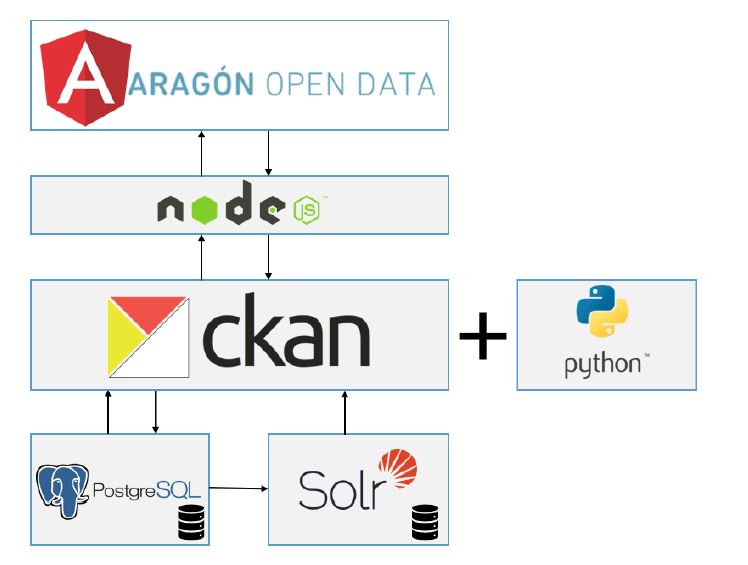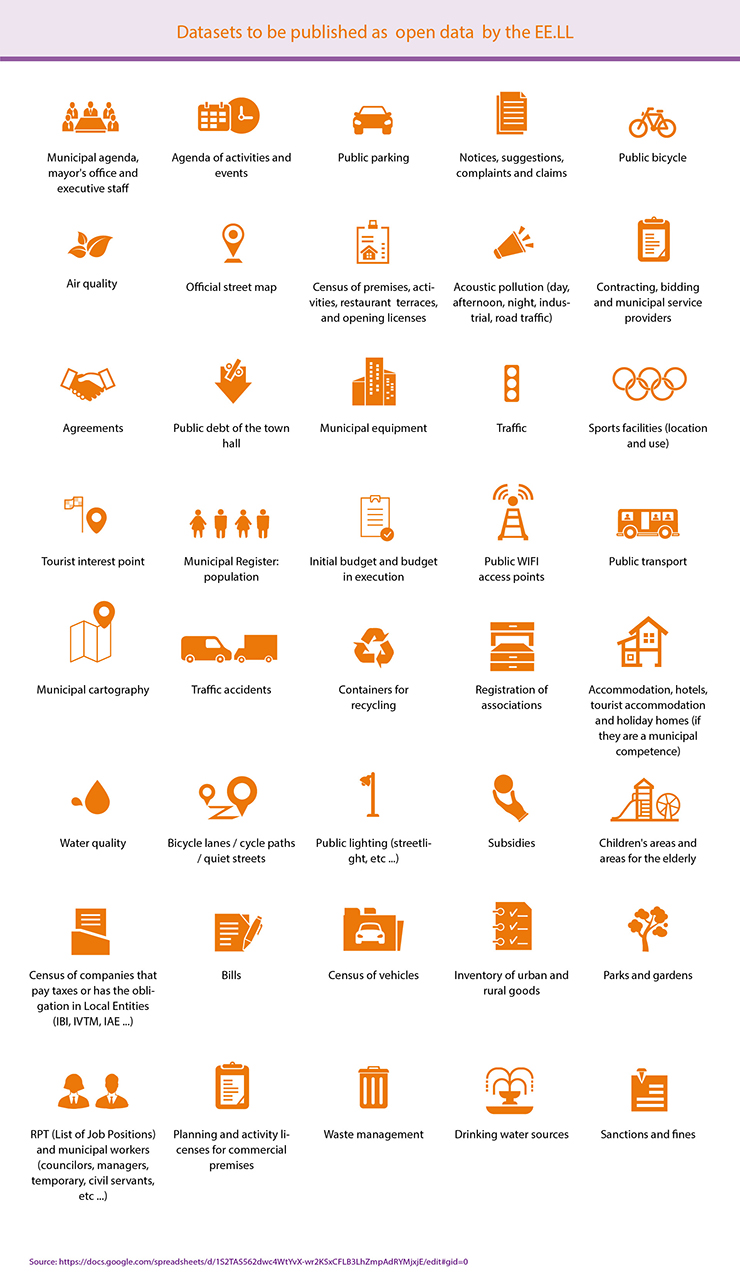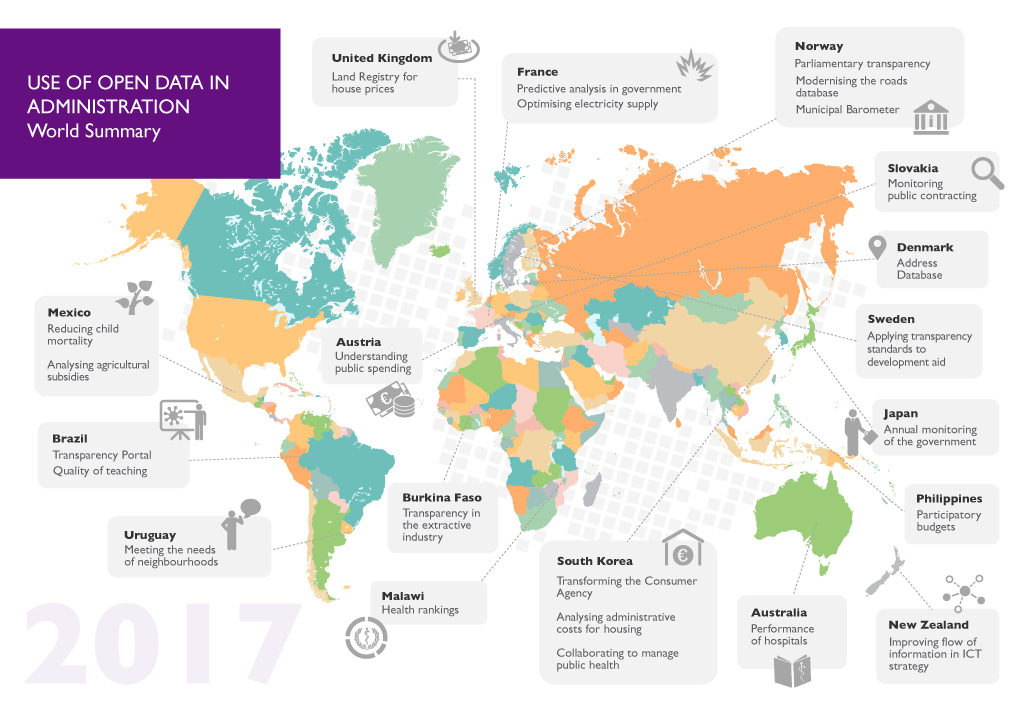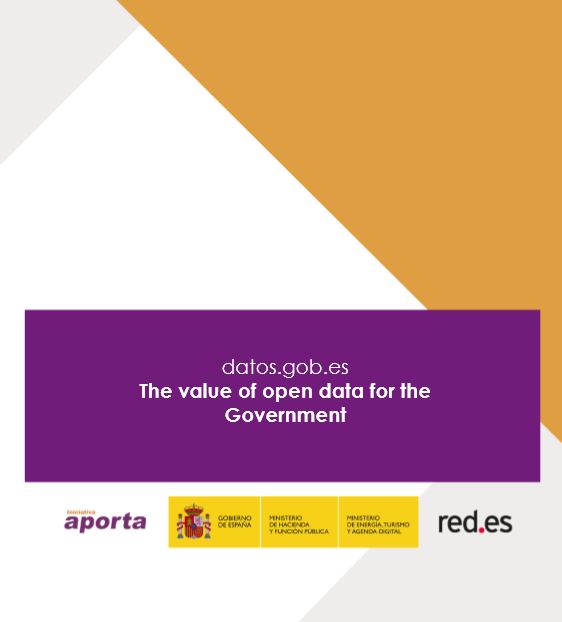Aragon Open Data is one of the most active open data initiatives on the Spanish scene. In addition to the implementation, management and maintenance of an interoperable data catalogue, since its inception Aragon Open Data has carried out actions to bring the culture of open data closer to citizens, companies and all types of organisations. These initiatives include the development of services to offer the data and facilitate its reuse in a simple way such as Aragopedia, Open Social Data or the recent Aragón Open Data Focus (more information available in this interview).
Given the knowledge that they hold, it is not surprising that they have begun to develop educational materials and technological articles with the aim of explaining how they have deployed different solutions to respond to the needs of localisation, access and reuse of the different sets of data.
Below is one such material, which focuses on explaining how they have implemented the CKAN software solution to improve the availability of data on the portal.
CKAN as an open data management software solution in a real case for the Aragon Open Data portal
CKAN is a free, open-source platform developed by the Open Knowledge Foundation for publishing and cataloguing data collections. Due to its free and open nature, as well as its rapid implementation, it has become a worldwide reference for the opening of data.
Since its birth in 2012, Aragon Open Data has bet on CKAN technology for the management of its open data system. The document "CKAN, cornerstone for the management of an open data system" shows us how its architecture works and serves as an example for other initiatives that want to implement a platform of this type.
The document describes the challenges they encountered when migrating the original platform to a higher version and how they solved it by building a client application. This process resulted in the current architecture of the portal, which is shown in the figure below:

The CKAN backend is developed entirely in Python, with its own Javascript front end, and allows the deployment of a layer of services that can be managed from an API, and the use of base plugins or extensions that provide additional functionalities to the platform. CKAN is supported by a PostgreSQL database, where the datasets it houses, its resources and other metadata required for the operation of the platform are stored, and makes use of Solr, a search engine that helps to speed up the location and availability of the datasets.
In addition to explaining this architecture, the document discusses the functionalities and extensions used in the customised CKAN instance, and how the set of components integrated into the platform: Angular, NodeJS, PostgreSQL and Solr coexist to provide data sets that are the basis for the development of open data services and solutions such as Presupuestos de Aragón or the already mentioned Aragón Open Data Focus.
CKAN incorporates an extension that supports RFD data serialisation which, in addition to allowing the exposure of linked data in formats such as RDF-XML or Turtle, is used to federate datasets that follow the DCAT specification of metadata, making CKAN a more versatile and appropriate platform for the publication of Linked Data, something that Aragon Open Data has also done as we can see in this other document.
You can download the document "CKAN as an open data management software solution in a real case for the Aragon Open Data portal" below (only available in Spanish). You can also complement your reading with these two additional articles:
- Automatic collection of open data: Explains how Aragon Open Data federates open data using a CKAN plugin.
- ELK architecture as an open data tool: Explains how Aragon Open Data uses an architecture based on the ELK technology stack (Elasticsearch, Logstash and Kibana).
Public administrations have a fundamental role in the infomediary sector, that is, in the business of data reuse. On the one hand, on the supply side, thanks to their role as publishers of open data, an original source of free information that can be used to create valuable products and services; and on the other hand, on the demand side, since administrations can also reuse this information and even be customers of the infomediaries.
This is the starting point of the new report from the National Observatory of Telecommunications and the Information Society (ONTSI), entitled "Public Administrations and the Reuse of Public Information". This report analyzes the weight and the way in which the administration interacts with the infomediary sector, becoming one of its main clients.
Specifically, the report determines that almost 50% of the infomediary companies have the public administrations as clients. The services most demanded by public bodies are consultancy and specific studies, data processing and the generation of visualization tools.
In order to produce the report, representatives of various bodies at all levels of administration were interviewed in depth: all the Ministries, 6 Autonomous Communities and 10 City Councils. All those interviewed agreed on the need to promote collaboration between the public and private spheres to improve the publication of information and the creation of valuable services. From the point of view of reuse, these collaborations boost economic activity and have an impact on three areas:
- Impact on users: They have a greater knowledge of public activity, improve their perception of administrations and can benefit from more personalized and higher quality services. In addition, they can take advantage of public information to create new businesses.
- Internal impact on the administrations themselves: The benefits are multiple, from the improvement of management and administrative processes, to cost savings or boosting the skills of public workers.
- Political impact: Greater knowledge of the environment allows for more informed decisions, in accordance with the reality and needs of citizens.
In this sense, the report contains a series of examples of good practices, which clearly show this impact, and which are included in the infographic below.
The report also includes an analysis of the challenges to be overcome by the administrations and a series of recommendations to obtain greater value and promote such public-private partnerships.
You can download the full report at the end of the article. Accompanying this report, the ONTSI has also published the study "From the Infomediary Sector to the Daya Economy. Characterization of the Infomediate Sector. Edition 2020", focused on the evolution of the market and business models based on data and information.

The European Data Portal (EDP) offers users an online training program, designed to disseminate what open data is and how they are changing the lives of all the inhabitants of our planet. This program consists of 16 modules, which introduce different aspects of the open data ecosystem: basic concepts, present and future trends, success stories and good practices in data publication, access and use.
Until now, these contents were available in languages such as English and French, but, thanks to the collaboration with the Aporta Initiative, the EDP has just published all the modules in Spanish.
The training materials are aimed at all types of users interested in the open data world, from basic users who want to get a general idea to experts in the field. Each module can take between 15-30 minutes, although each provides two hours of additional content for advanced users who want to deepen certain aspects.
The EDP recommend completing the sixteen modules in order to obtain a solid knowledge base on the different aspects of open data. However, if you prefer to focus on a particular topic, you can go directly to the corresponding module.
The 16 modules already available in Spanish are:
Didactic units
 Esta obra está bajo una licencia de Creative Commons Reconocimiento-CompartirIgual 4.0 Internacional.
Esta obra está bajo una licencia de Creative Commons Reconocimiento-CompartirIgual 4.0 Internacional.In 2017, the Spanish Federation of Municipalities and Provinces (FEMP) published the guide "Open data: strategic guide for its implementation and minimum datasets to be published", which included a series of recommendations and guidelines for public data opening with the aim of driving its publication and reuse. In addition to information related to legal framework or governance model, the guide also included 20 datasets considered as "the most interesting, possible and easier to publish by public administrations".
After the guide success, the FEMP has continued working on expanding these datasets, identifying 20 new ones that will make possible to standardize the publication of open data and facilitate its management. For this, the FEMP count on the help of a multidisciplinary working group where different interest groups were represented: cities, citizens, companies, universities and public bodies.
The result is a new document, entitled Open Data FEMP 2019: 40 datsets to be published by the Local Entities, whose objective is to provide a "common open data model that facilitates interoperability and the reuse of public sector information", as well as to bring Spanish local entities’ commitment to normalize open data closer to the international community.
This new guide addresses not only what datasets should be published by local entities, but also how they should be published to make them more useful for citizens and reusers. Using different tabs - one for each recommended dataset – the report indicated the recommended format or update frequency when publishing each dataset. The guide also indicates each dataset reuse value or complexity (based on a scale from 1 to 5), as well as some recommended visualization to make easier citizens access to information.
The document is mainly oriented to medium to large cities, although smaller municipalities can also use it as a knowledge framework. It can help companies, citizens, universities, entrepreneurs, researchers, data journalists, students, etc. interested in the subject, although, the roles that can make the most of the information are:
- Those responsible for developing or that have to develop open data policies.
- Those responsible for Open Government policies (transparency, participation, accountability, collaboration).
- Those responsible for the development of Information Technology.
- Those responsible for "Smart Cities" and Innovation projects.
The following image shows which are the 40 datasets recommended in the document:

Here you can download the full report (in Spanish, with an executive summary in English):
Spain is one of the most prominent countries in the opening of public sector data, according to the Open Data Maturity in Europe 2017 report - remember that our country ranks second in the ranking that measures the maturity and availability of open data in Europe, just behind Ireland. Although this is very positive, fruit of hard work, we must not forget that there is still a lot of public information that can be made available to citizens and reusers. But many organizations do not know how to do it.
For this reason, the Federation of Municipalities and Provinces of Spain (FEMP) has published "Open data: strategic guide for its implementation and minimum data sets to be published". This guide seeks to be "the work plan regarding data opening and its reuse for all local administrations". That is, it provides a series of recommendations and guidelines for entities to publish their data in a useful and efficient way, facilitating access to information and its reuse.
Specifically, the report includes information on the following fundamental aspects when addressing an open data initiative:
- The legal framework, both European and Spanish, and the different local ordinances.
- The model map of an open data portal. The report details the basic components that a portal must have - such as the catalog, a simple search engine or the conditions of use - and those that are recommended - such as the SPARQL Service or the visualization tools-.
- The model of governance and roles, based on the Open Government principle. The text defines the functions of the different parties involved in the initiative and gives advice to fight resistance to change.
- The data opening model, from the identification of the datasets to be opened, to the portal publication, its dissemination and maintenance.
- The technological plan, that analyzes the different tools, platforms, formats and standards to be used, based on factors such as interoperability and security.
- The measurement systems that allow to determine if the offered data respond to the needs of the users.
- The training and dissemination plan¸ to identify the main characteristics of the professionals who should manage the portal and the profiles of users who will use it.
- A series of basic concepts that we do not always know how to differentiate.
This guide has been prepared by the Open Data Group of the Network of Local Entities for Transparency and Citizen Participation of the Federation, made up of local entities, universities, the ASEDIE association, freelancers, entrepreneurs, companies and institutions such as Red.es. The work of this group did not end with the publication of this guide, but continues to promote open data, with activities such as the identification of new data sets that allow homogenizing the publication of open data and facilitate its management. These datasets are shown in the following figure.

The public sector is not only a large supplier of open data but also one of the largest users and beneficiaries of the opening of government data. The report ‘The value of open data for the Government’ that we published on Datos.gob.es outlines a large number of examples of how the government could see benefits in various areas and rely on the data for feedback and to reflect, cooperate, understand, optimise, and learn.
The creation of an open database in Japan to improve support for victims of the devastating earthquake in 2011, the early warning system to detect trends in diseases or epidemics launched by the Korean government, the portal for the quality of teaching in public schools in Brazil that drew on data from the Ministry of Education, the buildings in France in order to optimise supply, and the large global database of companies presented by Open Corporates are excellent examples of how to make public administration more agile and efficient by making good use of data.
El sector público no es únicamente un gran proveedor de datos abiertos, sino que es también uno de los mayores usuarios y beneficiarios de la apertura de los datos gubernamentales. El informe “El valor de los datos abiertos para la Administración” que publicamos en Datos.gob.es hace un recorrido por un buen número de ejemplos de cómo la administración puede beneficiarse en distintas áreas y apoyarse en los datos para retroalimentarse, reflexionar, colaborar, comprender, optimizar y aprender.
La creación de una base de datos abiertos en Japón para mejorar la asistencia a las víctimas del gran terremoto de 2011; el servicio de alarma temprana para detectar tendencias sobre enfermedades o epidemias puesto en marcha por el gobierno de Corea; el portal sobre la calidad de la enseñanza en las escuelas públicas de Brasil con datos procedentes del ministerio de educación; el estudio sobre los datos de consumo eléctrico en los edificios públicos de Francia para optimizar el suministro o la gran base de datos global de empresas que nos ofrece Open Corporates son grandes ejemplos de cómo lograr una administración pública más ágil y eficiente a través de un buen uso de los datos.

The report highlights how the use of open data improves the efficiency and effectiveness of the government itself through better planning of available resources, collaboration between different departmental areas, scrutiny of the correct use of resources, improvements in the interoperability of data and processes, as well as the adoption of standards that facilitate the sharing and storage of data.
It also emphasises that the use of such open data drives public innovation by contributing to the identification of patterns that help decision-making, to more active development and implementation of public policies, and the improvement of data quality thanks to public feedback.

The attached Report can be downloaded in PDF, Word, and ODT format.